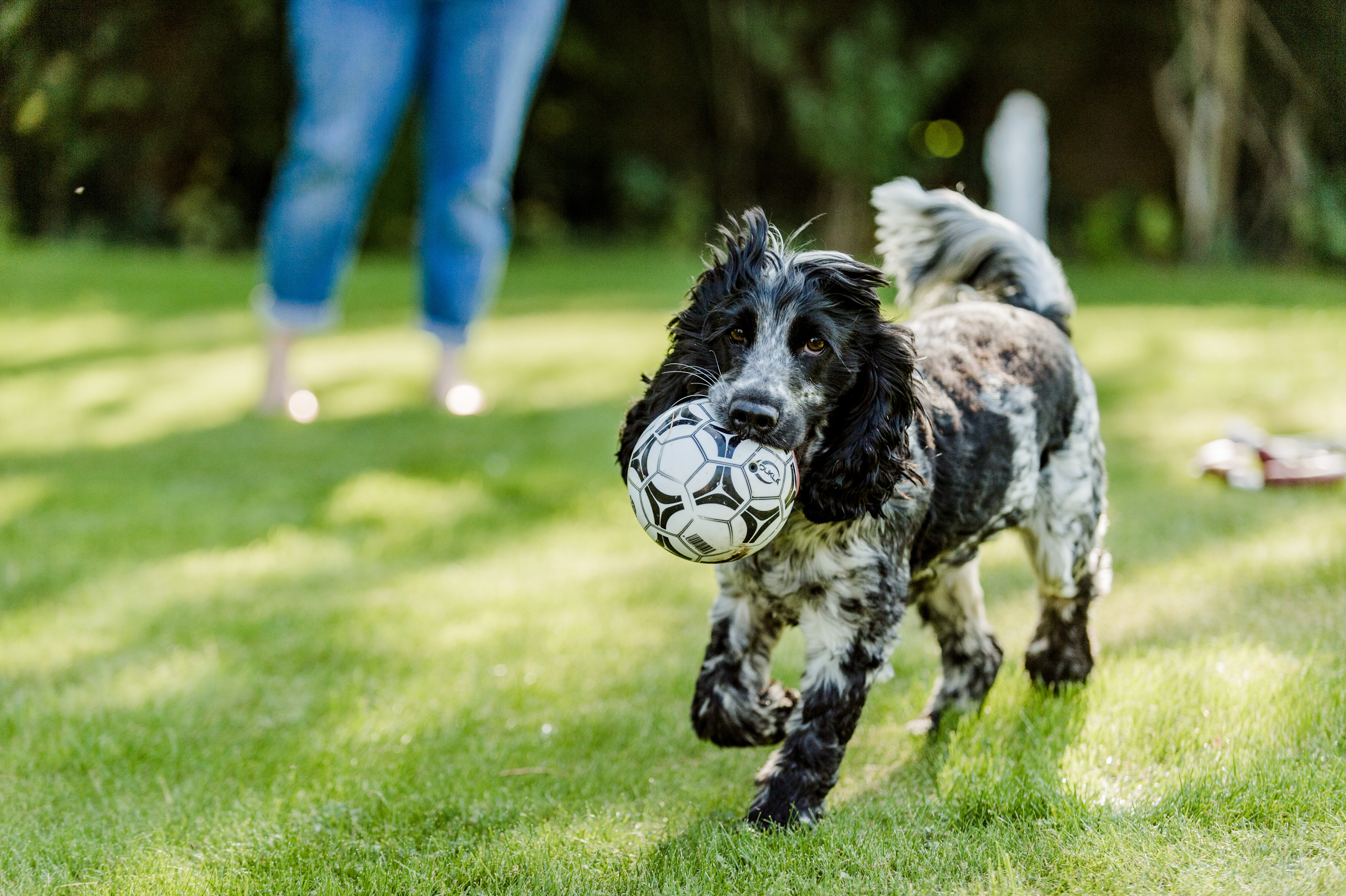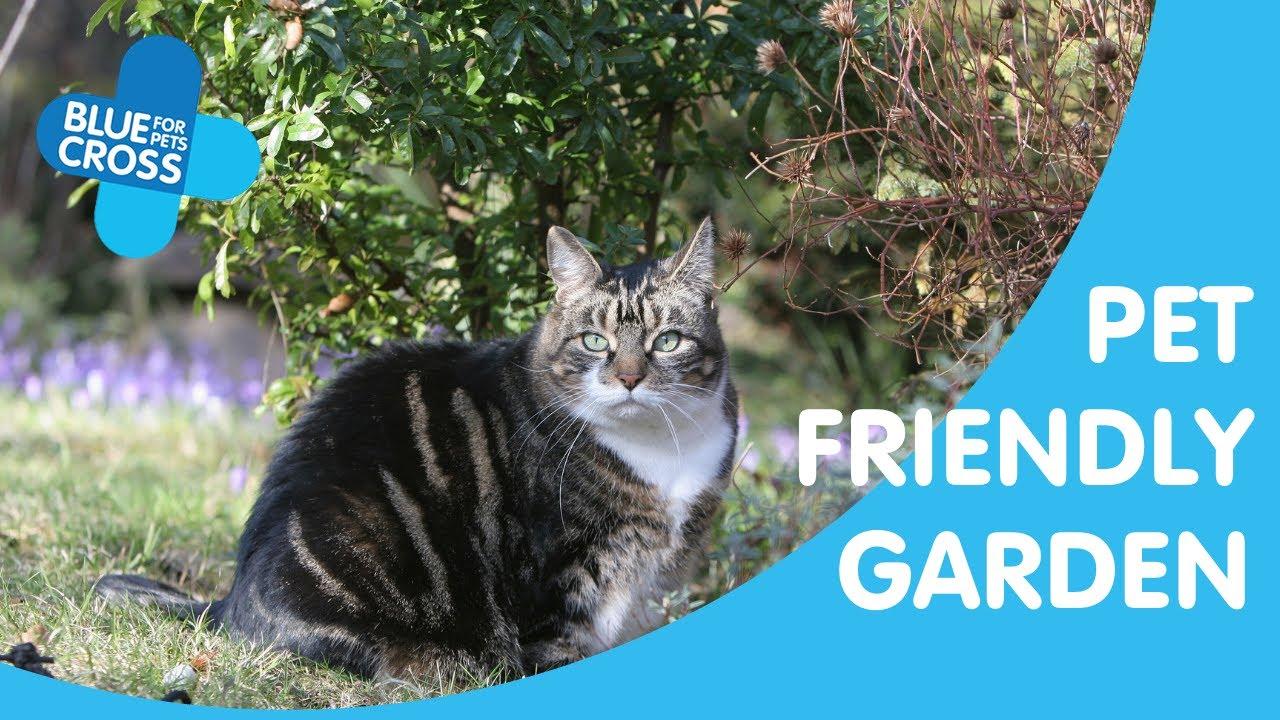
Pet friendly garden
Lots of pets love the great outdoors. While pets might make life more difficult for some keen gardeners, there are great ways to spend quality time in the garden with your pet without having to worry about dug-up flowerbeds.
We’ve put together our top tips so you and your pets can enjoy your garden all year round.
Make your garden secure
Fences and gates must be secure so pets can’t escape. Always make sure that your pet’s microchip details are up to date so they can be reunited with you if they go missing.
If your pet does manage to get out of your garden and you can’t find them, follow our advice on what to do if you’ve lost your dog or cat.
Dogs
Ideally, solid six-foot fences should be used, especially for bigger dogs. Check fences and trees after any storms. High winds can blow over fences or bring down branches that could be a hazard to your pets.
Cats
If you have cats that like to leave your garden, make sure they have easy access over the fence on both sides, especially if they’re getting older or have mobility issues.
Small pets
For rabbits and guinea pigs, a secure exercise run with a shelter on the lawn is best. This helps keep them safe from predators and means they can’t nibble garden plants. Make sure they have safe places to dig and that rabbits have enough space to run around and stretch up on their back legs.
Tip
For digging pets like rabbits and dogs, place chicken wire 12 inches below ground to prevent any escapes.
Pick the right plants
Make sure that any toxic plants are removed from your garden to keep pets safe.
- Lilies are highly poisonous to cats even in tiny quantities
- Foxgloves and Lily of the Valley are dangerous to most pets if eaten
- Many spring bulbs, including tulips and daffodils, can be toxic too
- Beware of thorns on plants and hedges, especially if they’re at your pet's eye level
Make sure you read our full guide to poisonous plants in dogs and cats.
Pet-friendly plants
You might find you have spare space in your flower bed and you want to try growing something special for your pet.
Dogs
While it’s not a good idea to let your dog eat plants out in the garden, you can always try growing your own vegetables for them instead.
Cats
Cats don’t need plants as part of their diet, but many like catnip or catmint which can be grown from seeds.
Small pets
Grow herbs for rabbits or guinea pigs and give them branches from untreated, safe trees (such as willow or apple trees). This helps keep their teeth healthy and brains active.
Look out for slugs and snails
Few gardeners’ welcome slugs and snails. But to keep your pet safe, you might need to think about the best way to stop these unwanted pests eating your prized plants.
Many slug pellets can be toxic – including some described as “safe” – so stick to using barriers like copper tape, eggshells, soot or slug traps.
Slugs and snails can also infect dogs with lungworm, a dangerous parasite. Talk to your vet about the best parasite treatment to keep your dog safe.
Tip
Avoid leaving pet toys and bowls outside and always wash them carefully if you spot any slime trails on them.
Avoid chemicals
Chemicals, like fertilisers and weed killers, are best avoided as many of them are toxic to pets. Lawn feed and moss killer may also irritate your pets' paws and can cause stomach upsets.
If you decide to use chemicals, make sure:
- they’re pet-safe
- that your pet isn’t in the garden when you do use them
- you fence off the area for a few days afterwards
- you lock all chemicals away somewhere your pet can’t reach, such as a shed or a cupboard
Cover ponds
Ponds can be a great way to encourage water wildlife, but they can be dangerous for your pet. Not all pets can swim. So if they fall in they may not be able to escape, especially if there are slippery, steep sides.
It’s a good idea to cover your pond with mesh or fence it off to stop pets getting in. You should also include a ramp or stones which can act as steps to help any pets or wildlife escape from the water.
Don’t forget to give fresh, clean, shallow bowls of water, so any thirsty pets or wild animals can safely get a drink.
Bees, wasps and insect stings
Try to stop pets from chasing bees and wasps. Stings can cause allergic reactions.
If you have plants that attract a lot of flying insects, consider putting them in a place your pet can’t access. If your pet does get stung, you’ll often notice swelling of:
- their feet
- eyelids
- face
Stings can become a pet emergency, so contact your vet straight away for help.
Find out more about insect stings in dogs.
Summer BBQs and parties
Lots of people know that hot coals can be a danger for pets. But the smoke from the BBQ can also irritate your pet’s airway, especially if they can’t move away.
Always make sure any small pets are far away from the BBQ and let dogs or cats inside the house if they seem to be getting a little too close to hot BBQs or smoke.
BBQ food and pets
Don’t be tempted to give your pet tasty treats from the BBQ. Many human foods are best avoided by pets and alcohol is a definite no-no.
Ask guests not to leave food, skewers or hot cooking tools within your pet’s reach.
Important
Make sure waste bins are secure, corn on the cob husks and wrappers can be very tempting for your pet but can cause dangerous gut blockages.
Have fun
Don’t forget to enjoy your garden with your pet too. Spending time together in the garden can be a great way to exercise and have fun with your pet. Just remember not to exercise if it’s too warm to avoid heat stroke.
You can also help your pet enjoy the garden on their own. Here are a few ideas to try.
Dogs
Use a sand pit filled with soil, ripped up paper or safely sized balls so your dog can dig for treats.
Cats
Many cats love to climb. Cats like to sit up high, so consider putting up platforms for them. If there are lots of cats in the area provide several so a neighbour’s cat can’t glare down at your pet.
Small pets
Provide tunnels for your bunnies and guinea pigs to explore.
If it's too warm to play outside, there are other ways to keep your pets entertained indoors.
Top tips for garden safety
Here are our top tips to make your garden a safe place for your pets.





